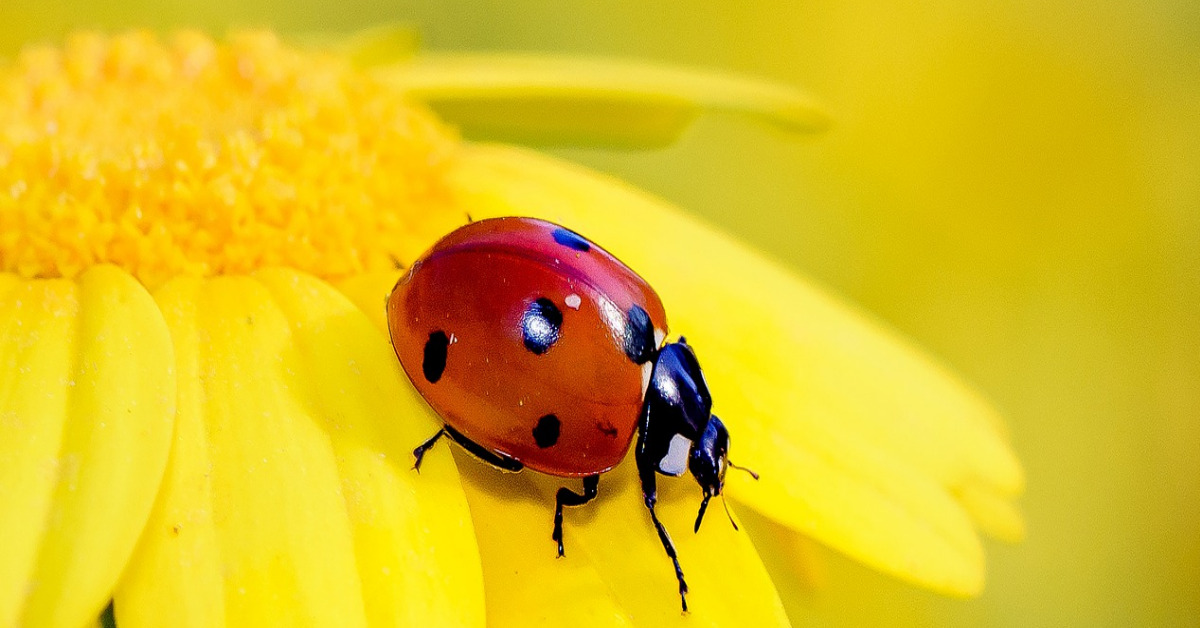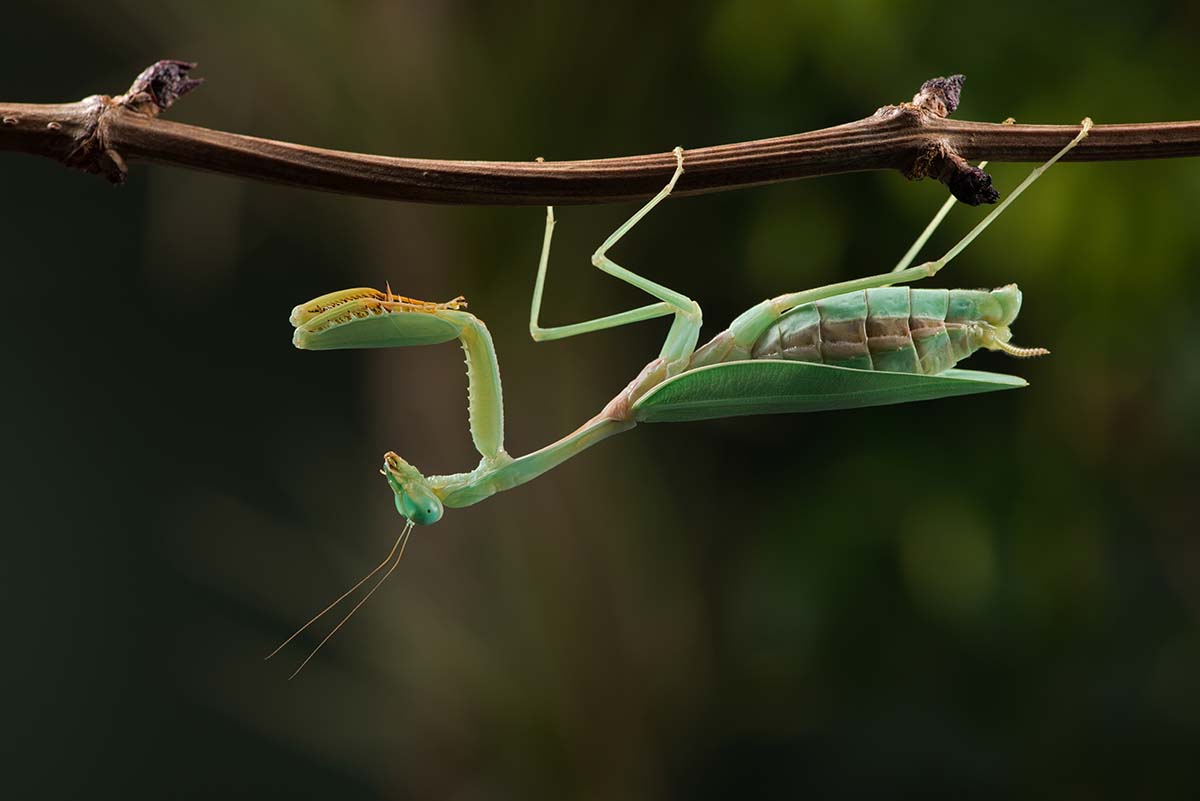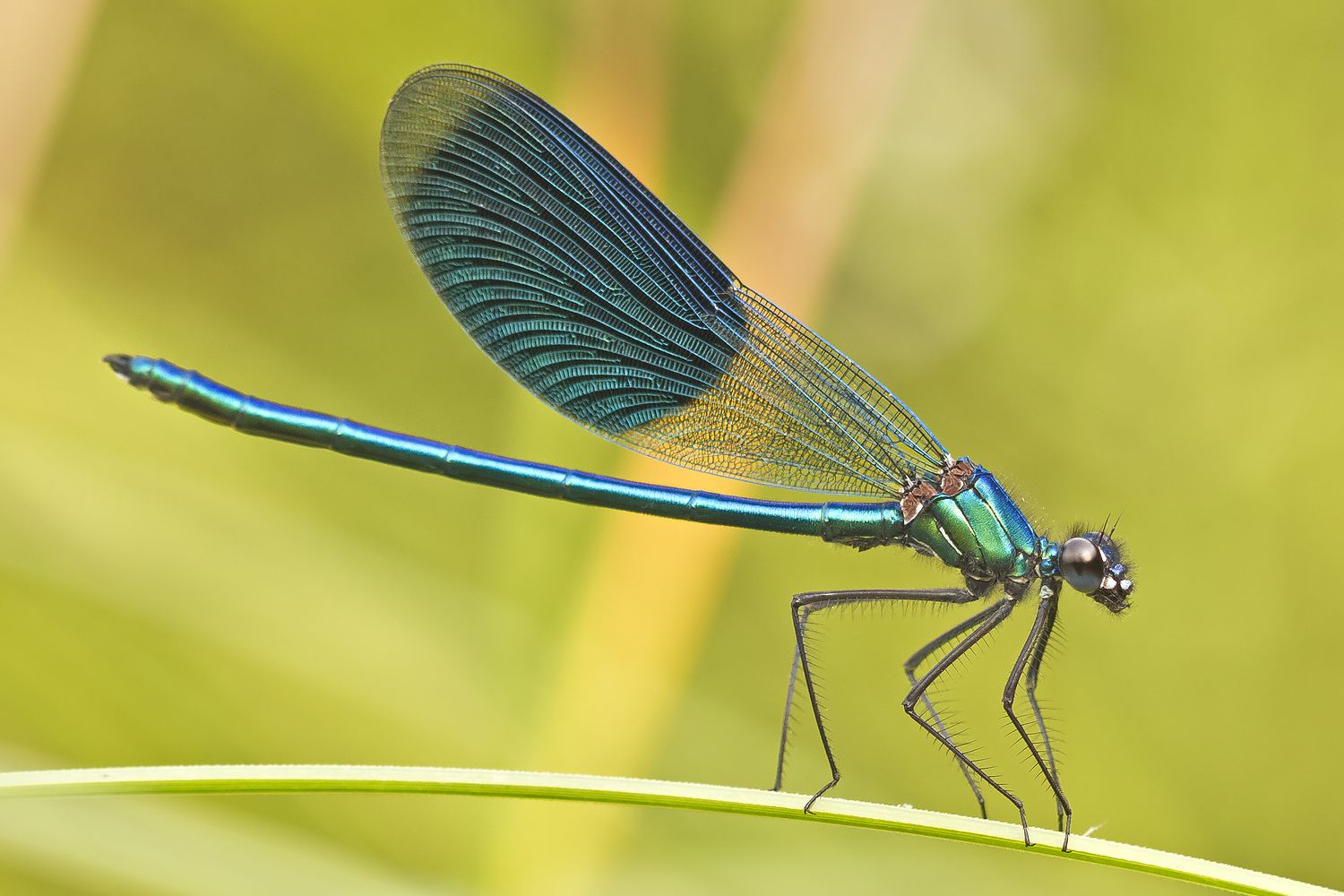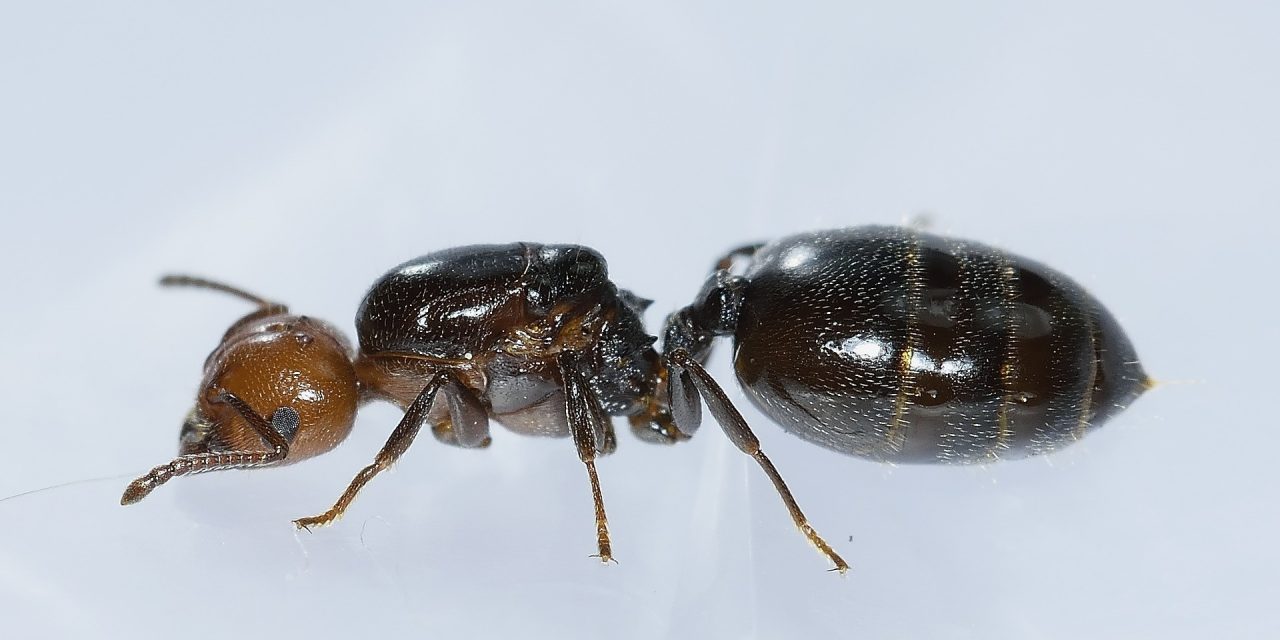Home>Gardening News and Trends>Latest News>What Features Do All Insects Have In Common
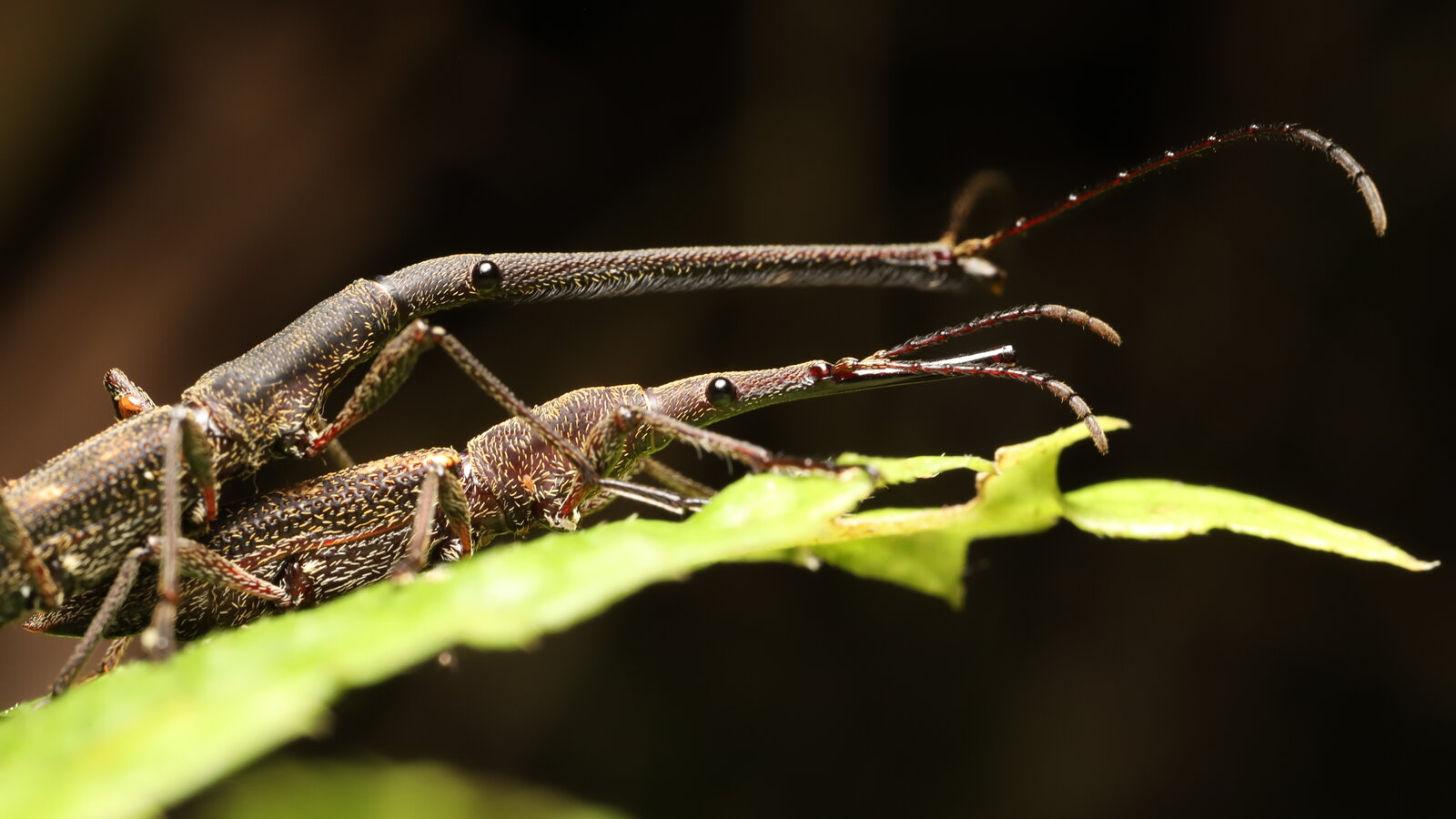

Latest News
What Features Do All Insects Have In Common
Modified: January 22, 2024
Discover the latest news on the fascinating world of insects. Uncover the common features shared by all insects and delve into their incredible adaptations and behavior.
(Many of the links in this article redirect to a specific reviewed product. Your purchase of these products through affiliate links helps to generate commission for Chicagolandgardening.com, at no extra cost. Learn more)
Table of Contents
Introduction
Insects are fascinating creatures that have captivated human interest for centuries. They make up the largest and most diverse group of animals on Earth, with over one million identified species and countless more awaiting discovery. From industrious ants to graceful butterflies, these small creatures play vital roles in ecosystems around the globe.
One of the reasons insects are so successful is their unique set of features that separate them from other animals. These characteristics have allowed them to adapt and thrive in a wide range of habitats, from deserts to rainforests, and from freshwater to the depths of the ocean.
In this article, we will explore the common features that all insects share, providing you with a deeper understanding of these remarkable creatures. From their resilient exoskeletons to their intricate sensory organs, each attribute contributes to their incredible versatility and survival.
So, join us as we delve into the world of insects and discover the key features that make them so extraordinary. Whether you are a seasoned entomologist or simply curious about the intricacies of the natural world, this exploration will enlighten and amaze you. Let’s dive in and uncover the secrets of the insect kingdom!
Exoskeleton
One of the defining features of insects is their exoskeleton, a hard external covering that protects their delicate internal organs. This exoskeleton, made primarily of a tough substance called chitin, provides support, acts as a barrier against predators and environmental factors such as dehydration, and offers attachment points for muscles.
The exoskeleton is composed of several layers, the outermost of which is called the cuticle. This cuticle is made up of a flexible protein called resilin, which allows for movement and flexibility. Beneath the cuticle, there is a layer of thickened chitin that provides rigidity and strength.
Unlike humans, whose bones grow internally, insects grow by molting. As an insect grows, its exoskeleton becomes too small and restrictive. To accommodate growth, the insect undergoes a process called molting, where it sheds its old exoskeleton and produces a new, larger one. During molting, insects are vulnerable and may seek shelter until their new exoskeleton hardens.
The exoskeleton also plays a vital role in determining an insect’s shape and form. The segmentation of the exoskeleton gives insects their characteristic body structure, with three distinct body segments: the head, thorax, and abdomen. These segments are connected by flexible joints, allowing for a wide range of movement and versatility.
In addition to its protective function, the exoskeleton also serves as a platform for the attachment of muscles. Muscles are attached to the inner surface of the exoskeleton and work in pairs, with one muscle contracting and the other relaxing to create movement. This arrangement provides insects with impressive strength and coordination, allowing them to perform incredible feats, such as jumping, flying, or carrying objects many times their own weight.
The exoskeleton is a remarkable adaptation that has contributed to the success and survival of insects. Its protective and supportive qualities, along with its role in facilitating movement and growth, make it an essential feature of these incredible creatures.
Three Body Segments
One of the distinguishing characteristics of insects is their segmented body structure, which is divided into three main parts: the head, thorax, and abdomen. Each segment serves a specific purpose and contributes to the overall functionality of the insect.
The head segment is located at the anterior end of the insect and contains vital sensory organs and feeding structures. Insects have a pair of compound eyes, which are made up of numerous individual lenses called ommatidia. These compound eyes provide insects with a wide field of vision and enable them to detect movement and identify objects in their environment. Additionally, many insects have simple eyes, known as ocelli, which can detect light intensity and help with orientation.
Insects also possess a pair of antennae, which are sensory organs located on the head. These antennae are used to detect chemical cues, such as pheromones, and to sense vibrations and temperature changes in the surrounding environment. They play a crucial role in communication, mating, and locating food sources.
The thorax segment is situated in the middle of the insect’s body and serves as the attachment point for the insect’s six legs and wings (if present). Insects have three pairs of jointed legs, each equipped with specialized structures for walking, jumping, swimming, or climbing. The legs are essential for locomotion and aid in various activities such as foraging, hunting, and reproductive behaviors.
Insects with the ability to fly have wings attached to the thorax. Wings come in a variety of shapes and sizes, depending on the insect species. They enable insects to navigate vast distances, escape predators, and seek out resources. The structure and venation patterns of wings offer valuable information for identifying different species and understanding their evolutionary relationships.
Rearward from the thorax is the abdomen segment, which houses vital organs such as the digestive, reproductive, and respiratory systems. The abdomen is typically flexible and can expand or contract depending on the needs of the insect. It plays an essential role in digestion, reproduction, and waste elimination.
The three body segments of insects contribute to their remarkable adaptability and success in diverse environments. The specialization of each segment allows insects to perform specific functions critical to their survival, such as sensing the environment, locomotion, and reproduction.
Six Legs
One of the most recognizable features of insects is their six legs. These legs provide insects with their primary means of locomotion and play a crucial role in their daily activities, including feeding, mating, and navigating through their environment.
Insects’ legs are segmented and jointed, which allows for a wide range of movement and flexibility. Each leg is composed of several parts, including the coxa, trochanter, femur, tibia, and tarsus. These segments work together in a coordinated manner to enable precise and agile movements.
The legs of insects are equipped with specialized structures that vary depending on the species and their unique adaptations. For example, some insects have modified front legs that are highly developed for grasping prey or holding onto surfaces. Others have long and slender legs, which allow for efficient movement across tall grass or delicate surfaces.
In addition to their locomotive function, insect legs are also equipped with sensory receptors. These receptors allow insects to detect vibrations, temperature changes, and chemical cues in their surroundings. By relying on their legs as sensory organs, insects can navigate their environment, locate food sources, and communicate with each other.
The design and structure of insect legs also contribute to their remarkable strength and efficiency. Insects are known for their ability to carry objects many times their own body weight. This feat is made possible by the arrangement and coordination of muscles within their legs, along with the mechanical advantage provided by their jointed structures.
Furthermore, the legs of insects can exhibit specialized adaptations according to their lifestyles. For example, grasshoppers have powerful hind legs adapted for jumping, while water striders have long and slender legs that distribute their weight evenly, allowing them to glide across the surface of water without sinking.
The six legs of insects are a defining feature of their anatomy, enabling them to explore their environment, capture prey, and interact with each other. This adaptation has played a crucial role in the success and diversification of the insect class, making them one of the most abundant and diverse groups of animals on Earth.
Antennae
Antennae are highly specialized sensory organs that are found on the heads of insects. These slender appendages serve as vital tools for communication, navigation, and perception of the environment. While the exact shape and structure of antennae may vary among different insect species, their functionality remains consistent across the insect world.
Antennae are primarily used for chemoreception, allowing insects to detect and interpret chemical signals in their surroundings. These chemical signals, known as pheromones, are used for various purposes, including attracting mates, marking territories, and communicating with members of the same species. The sensitivity of insect antennae to pheromones is remarkably high, enabling insects to detect minute amounts and respond accordingly.
In addition to chemoreception, antennae also play a role in mechanoreception. Insects can detect vibrations and movements in the air or on surfaces through their antennae. This provides them with valuable information about their environment and potential threats or opportunities. For example, mosquitoes use their antennae to detect the presence of carbon dioxide emitted by warm-blooded animals, helping them locate potential hosts for blood meals.
The structure of an insect’s antennae is intricate and diverse, mirroring the diversity of adaptations among different species. Some antennae are simple and thread-like, while others may be branched or have specific modifications, such as clubs or sensors. These variations in structure allow for specific adaptations to different ecological niches and lifestyles.
Antennae also serve as a means of communication between insects. By touching antennae or emitting specific pheromones, insects can convey information about their reproductive status, presence of predators, or availability of resources. This communication aids in mate recognition, territorial behaviors, and social interactions among colony members.
Overall, the antennae of insects are essential sensory organs that enable them to navigate their environment, communicate with each other, and detect chemical and mechanical cues. Their versatility and sensitivity highlight the remarkable adaptation of insects and their ability to thrive in diverse habitats around the world.
Wings (if applicable)
While not all insects possess the ability to fly, many of them have evolved wings, making them the only invertebrates capable of true powered flight. The presence of wings grants insects a remarkable advantage in terms of mobility, dispersal, and accessing new resources.
Insect wings are typically composed of thin, membranous structures supported by a network of veins. The wings are attached to the insect’s thorax and can be folded or extended as needed. The flexibility and lightness of insect wings are essential for efficient flight, allowing insects to maneuver through different environments and navigate obstacles with ease.
The function and form of insect wings can vary greatly, reflecting the diverse ways in which insects have adapted to their specific habitats and lifestyles. Some insects have wings that are transparent and delicate, while others may have vibrant colors or intricate patterns that serve to deter predators or attract mates.
Flight provides insects with numerous advantages. It allows them to search for food, locate mates, and inhabit new territories. Insects with wings can explore vast areas, find suitable breeding sites, and access resources that may be scarce or otherwise inaccessible to species limited to ground or aquatic habitats.
In addition to its evolutionary significance, insect flight has inspired human innovation. The study of insect wings has influenced the development of aviation technology, leading to advancements in aircraft design and aerodynamics. The ability of insects to fly efficiently with minimal energy expenditure has been a source of inspiration and admiration for engineers and scientists alike.
It is important to note that not all insect wings are the same. Some insects have undergone modifications or even lost their wings altogether as part of their evolutionary adaptations. These adaptations may involve trade-offs, where the loss of flight is compensated by other survival strategies, such as enhanced camouflage or specialized lifestyles.
In summary, wings are a remarkable feature possessed by many insects, enabling them to take to the skies and explore new horizons. The evolution of wings has given insects unprecedented advantages in terms of mobility, colonization, and resource acquisition, making them one of the most diverse and successful groups of animals on our planet.
Compound Eyes
One of the most distinctive features of insects is their compound eyes. These complex visual organs set insects apart from most other animals and provide them with a unique and highly efficient method of detecting and interpreting their surroundings.
Compound eyes consist of numerous individual lenses called ommatidia, each with its own light-sensing unit. These ommatidia work together to form a mosaic-like image, providing insects with a panoramic view of their environment. The number of ommatidia can vary greatly among different species, with some insects having only a few hundred while others may have tens of thousands.
The structure of compound eyes allows insects to have a wide-angle field of vision. This wide field of vision makes it difficult for insects to perceive visual details comparing to eyes of vertebrate animals; however, it grants them the ability to detect movement and changes in light intensity quickly. This is particularly advantageous for insects in terms of predator detection, hunting prey, and avoiding obstacles.
The unique design of compound eyes allows them to perceive the world differently from humans. Insects can detect ultraviolet and polarized light, which provides them with additional information about their surroundings. Some insects also have specialized adaptations in their compound eyes that allow them to see in low-light conditions or to track fast-moving objects accurately.
The visual information gathered by compound eyes is processed by the insect’s brain, enabling them to make split-second decisions and react to changes in their surroundings. This quick processing allows insects to exhibit precise movements and impressive flight maneuvers.
It is essential to acknowledge that while compound eyes offer numerous advantages, there are some limitations. Compound eyes do not provide the same level of visual acuity as the single-lens eyes found in humans and other vertebrates. However, they compensate for this by offering a wider range of vision and a rapid response to movement.
The evolution of compound eyes has been a driving force behind the incredible success of insects. Their visual capabilities, combined with other sensory organs, allow insects to navigate, communicate, find mates, and locate resources in their environment. Understanding the intricate workings of compound eyes opens up new realms of fascination and admiration for these remarkable creatures.
Respiration
Insects have a unique respiratory system that differs significantly from the lungs of vertebrates. Instead of using lungs to extract oxygen from the air, insects rely on a network of tiny tubes called tracheae for respiration. This system allows insects to efficiently obtain oxygen and release carbon dioxide, enabling them to carry out their metabolic processes.
The tracheal system functions through a series of openings called spiracles, which are located along the sides of an insect’s body. Air enters through these spiracles and travels through the branching network of tubes, delivering oxygen directly to the body tissues. Carbon dioxide, a byproduct of the metabolic process, is then expelled through the same system.
The tracheal tubes are lined with a thin layer of cuticle, which helps to prevent collapse and maintain the structure of the tubes. The branches of the tracheal system reach all parts of the insect’s body, ensuring that oxygen can be delivered to even the most remote tissues. This efficient system allows insects to sustain high levels of activity and perform complex behaviors, such as flying and reproducing.
The rate of respiration in insects is influenced by various factors, including temperature and activity level. In warmer conditions, insects require more oxygen and have a higher respiratory rate. Some insects, such as bees, can modify their respiration rate by adjusting the movement of their abdomens, which helps regulate their internal temperature.
Certain insects have evolved specialized adaptations to enhance respiration. For example, aquatic insects have developed structures that allow them to extract oxygen from water, enabling them to live and thrive in aquatic environments. These adaptations may include modified spiracles or elongated tracheal tubes that extend to the water’s surface.
It is worth noting that the tracheal respiratory system does have some limitations. As the size of an insect increases, the oxygen diffusion within the tracheal tubes becomes less efficient. This is why larger insects, such as beetles, may supplement their respiration with other mechanisms, such as pumping air through their bodies or using a combination of tracheal and cutaneous respiration.
Overall, the tracheal respiratory system is a highly efficient adaptation that allows insects to thrive in diverse environments. This unique mechanism fuels their energy demands and enables them to carry out essential physiological processes, contributing to the incredible diversity and success of insects on our planet.
Life Cycle
The life cycle of an insect typically consists of four stages: egg, larva, pupa, and adult. This process, known as complete metamorphosis, is characteristic of many insect species and allows for a remarkable transformation from one form to another.
The life cycle begins with the egg stage, where a female insect deposits eggs in a suitable location. The number and placement of eggs vary depending on the species. In some cases, eggs are laid individually, while in others, they are deposited in clusters or laid within a protective structure.
From the eggs emerge larvae, which are often referred to as caterpillars or grubs. Larvae undergo a period of rapid growth and development, consuming food voraciously to fuel their growth. This stage is characterized by a distinct body form and feeding apparatus specific to the species. Larvae may molt several times as they grow, shedding their old skin to accommodate their increasing size.
After the larval stage, insects enter the pupal stage, during which they undergo a remarkable transformation. Inside the pupal case, the insect’s body undergoes a complete reorganization and restructuring. This stage is often referred to as the resting or metamorphosis phase, as the insect does not engage in feeding or locomotion. The length of the pupal stage varies among species, with some insects spending only a few days in this stage while others may remain pupae for several months.
Finally, the adult insect emerges from the pupal case in its final form. This stage is characterized by the acquisition of wings, sexual maturity, and the ability to reproduce. Adult insects typically have a shorter lifespan compared to their juvenile stages, though this can vary depending on the species and environmental conditions.
It is important to note that not all insects follow the same life cycle pattern. Some insects, such as butterflies, moths, and beetles, go through complete metamorphosis, while others, like grasshoppers and cockroaches, undergo incomplete metamorphosis. In the latter case, the transition from the nymph stage to the adult stage does not involve a pupal stage. Instead, the nymphs resemble miniature versions of the adults and gradually develop into their mature form.
The development and timing of an insect’s life cycle are influenced by various factors, including temperature, humidity, and availability of food. These factors can affect the duration of each stage and impact the overall population dynamics of the species.
Understanding the life cycle of insects is crucial for studying their behavior, ecology, and interactions with their environment. It allows us to appreciate the incredible transformations these creatures undergo and the intricacies of their existence.
Conclusion
Insects are truly remarkable creatures that have captured the fascination of humans for centuries. Their incredible diversity, adaptability, and unique set of features make them a vital component of ecosystems around the world. From their resilient exoskeletons to their specialized sensory organs, each characteristic contributes to their extraordinary success and survival.
The exoskeleton provides insects with protection, support, and a platform for muscle attachment. Their three distinct body segments – head, thorax, and abdomen – enable specialized functions and movements. Six legs offer insects the ability to navigate their environment and engage in various behaviors. Antennae serve as sensory organs, allowing insects to detect chemical cues and vibrations. For those capable of flight, wings provide swift mobility and access to new resources. Compound eyes offer a wide-angle view of the world and the ability to detect movement. The tracheal respiratory system provides an efficient means of acquiring oxygen and releasing carbon dioxide. Finally, the insect life cycle, with its egg, larva, pupa, and adult stages, showcases the remarkable transformation and adaptation of these creatures.
Understanding the common features that all insects share allows us to better appreciate their remarkable adaptations and the critical roles they play in the ecosystems. From pollination to decomposition, insects contribute to the balance and functioning of the natural world. Their intricate biology and behavior continue to intrigue scientists and inspire technological advancements.
Next time you encounter an insect, take a moment to marvel at its exquisite design and remarkable abilities. These small creatures have conquered the sky, underground, and everything in between. They remind us of the incredible diversity and adaptability of life on Earth. So, let us embrace the wonders of the insect world and continue to explore and protect these fascinating creatures that share our planet.
